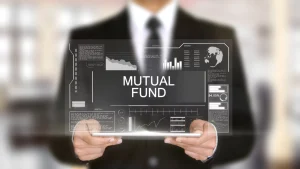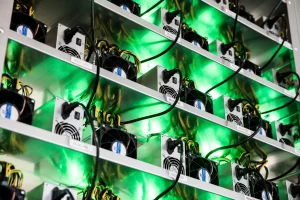
Let’s be honest. The weather isn’t what it used to be. It feels more… intense. Wildfires leap across highways with terrifying speed. Floods don’t just inconvenience towns; they reshape them. And a power outage? Well, it’s no longer just a few hours in the dark. It can mean spoiled food, lost work, and a real hit to your wallet.
Financial preparedness for these events isn’t about fear-mongering. It’s the opposite. It’s about building a sense of security and control when the forecast looks uncertain. Think of it as a financial umbrella. You hope you don’t need it, but when the storm hits, you’re incredibly glad you have it. This is your guide to weaving that safety net.
Why Your Emergency Fund Needs a Climate Upgrade
You’ve probably heard the old advice: save three to six months of expenses. That was for a different era—a time of job loss or medical emergencies. Climate events add a new, urgent layer. They create instant, unexpected costs.
Imagine an evacuation order. You need gas, a hotel room for a week, maybe pet boarding, and takeout meals. That can easily run into thousands of dollars. And that’s before you even deal with damage to your home.
So, what’s the new number? Honestly, it’s personal. But consider stretching that fund. If you live in an area prone to hurricanes, wildfires, or severe flooding, aiming for a more robust fund isn’t alarmist—it’s pragmatic. It’s the difference between a major financial setback and a manageable inconvenience.
The Three Pillars of Climate-Proofing Your Finances
1. The “Go-Bag” for Your Bank Account
This is your immediate, liquid cash. When the power is out, ATMs and card readers don’t work.
- Stash some cash: Keep a few hundred dollars in small bills in a safe, waterproof place at home. It’s for fuel, supplies, or a last-minute motel.
- Digital access: Ensure you can access your bank accounts from your phone. Set up mobile banking and know your passwords. A portable phone charger is as crucial as that cash stash.
- Credit cushion: Maintain a low-balance credit card for larger, unforeseen expenses. Just be sure you have a plan to pay it off quickly.
2. The Paper Trail and The Digital Cloud
In the chaos after an event, proving who you are and what you own is half the battle. Water and fire aren’t kind to filing cabinets.
Here’s a quick checklist of what to secure:
| Category | What to Secure |
| Personal Identification | Passports, driver’s licenses, social security cards (scans/photos). |
| Financial Documents | Insurance policies, bank statements, investment accounts. |
| Property Proof | Home deed, car titles, mortgage documents. |
| Medical Records | Vaccination records, prescription lists, important doctor contacts. |
The easiest way? Take photos or scans and store them in a secure cloud service like Google Drive or Dropbox. It takes an afternoon and it’s one less thing to worry about when every second counts.
3. Insurance: Reading the Fine Print Before the Storm
This is a big one. Many people assume “homeowners insurance” is a catch-all. It’s not. In fact, most standard policies explicitly exclude damage from floods and earthquakes.
You need to understand your coverage gaps. Now.
- Flood Insurance: This is a separate policy, often through the National Flood Insurance Program (NFIP). There’s typically a 30-day waiting period, so you can’t buy it as the hurricane approaches.
- Wildfire & Deductibles: In high-risk fire zones, some insurers are moving to percentage-based deductibles instead of flat fees. That means you could be on the hook for a much larger portion of the damage.
- Document Everything: This is a pro-tip. Create a home inventory. Walk through your house with your phone and video everything you own—open drawers, closets, the garage. This is invaluable evidence for an insurance claim.
Beyond the Basics: Long-Term Financial Resilience
Okay, we’ve covered the immediate stuff. But what about the bigger picture? How do you make your entire financial life more resilient?
It starts with thinking about your biggest assets. For most of us, that’s our home and our ability to earn an income.
- Housing Location & Hardening: If you’re looking to buy a home, research its climate risks—flood plains, fire zones. For your current home, consider investing in mitigations like storm shutters or fire-resistant landscaping. These can sometimes even lower your insurance premiums.
- Income Diversification: Climate disruption can shut down a local economy. Having a side hustle or skills that can be performed remotely provides a crucial backup income stream. It’s a financial airbag.
- Community is a Currency: Get to know your neighbors. A strong community network is an informal insurance policy. You can share resources, information, and support when official systems are overwhelmed.
The Bottom Line: It’s Not Doomsday Prepping, It’s Smart Planning
Look, the goal here isn’t to build a bunker. It’s to build confidence. Taking these steps doesn’t mean you’re expecting the worst; it means you’re respecting the possibility. You’re acknowledging that the world is a bit less predictable than it once was.
And that’s a powerful shift. Because when you have your financial ducks in a row, you can focus on what truly matters during a crisis—the safety of your loved ones. The money stuff? It’s already handled. You’ve given yourself the gift of a clear head in a cloudy situation. And that, in the end, might be the most valuable asset of all.








